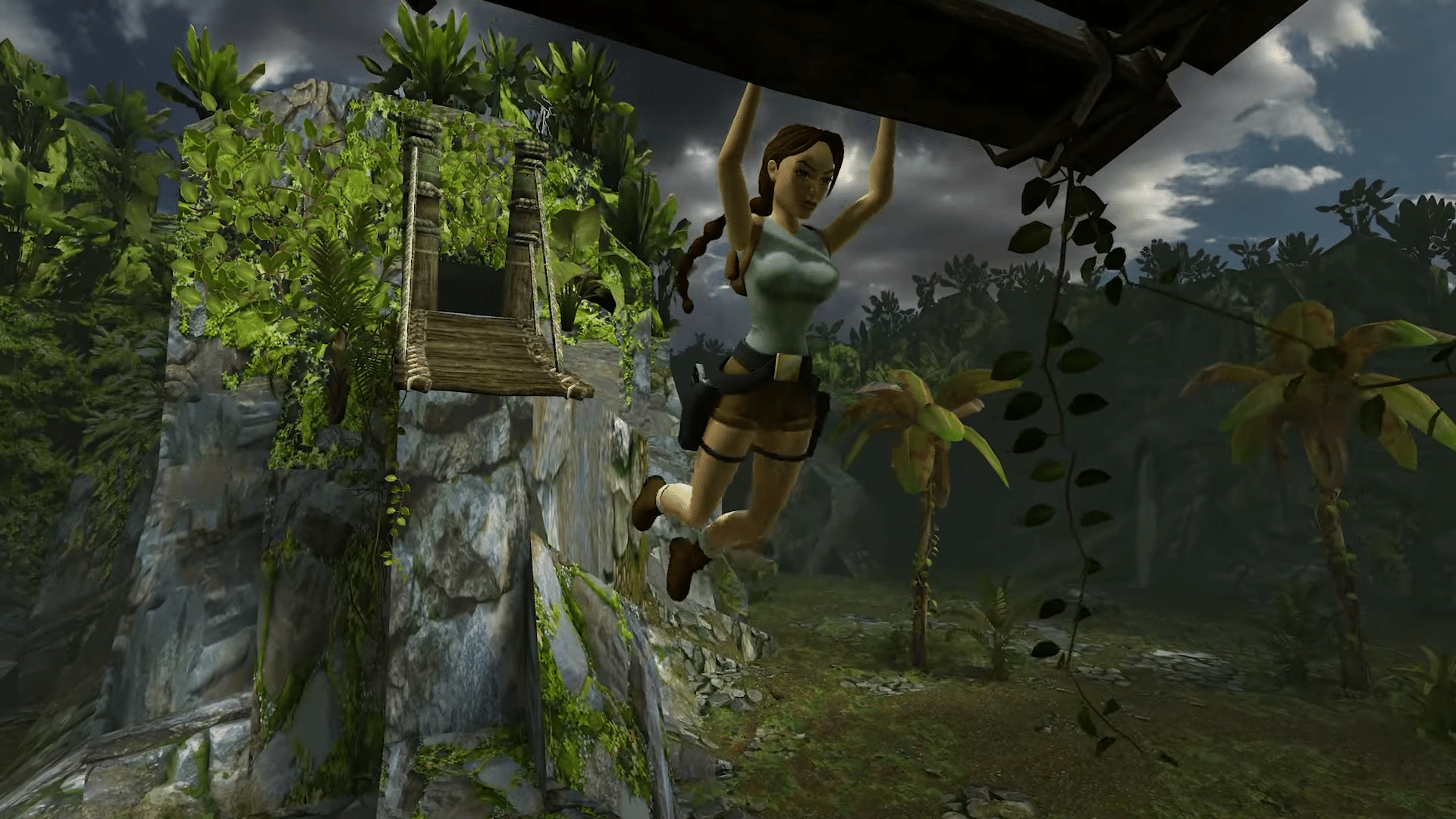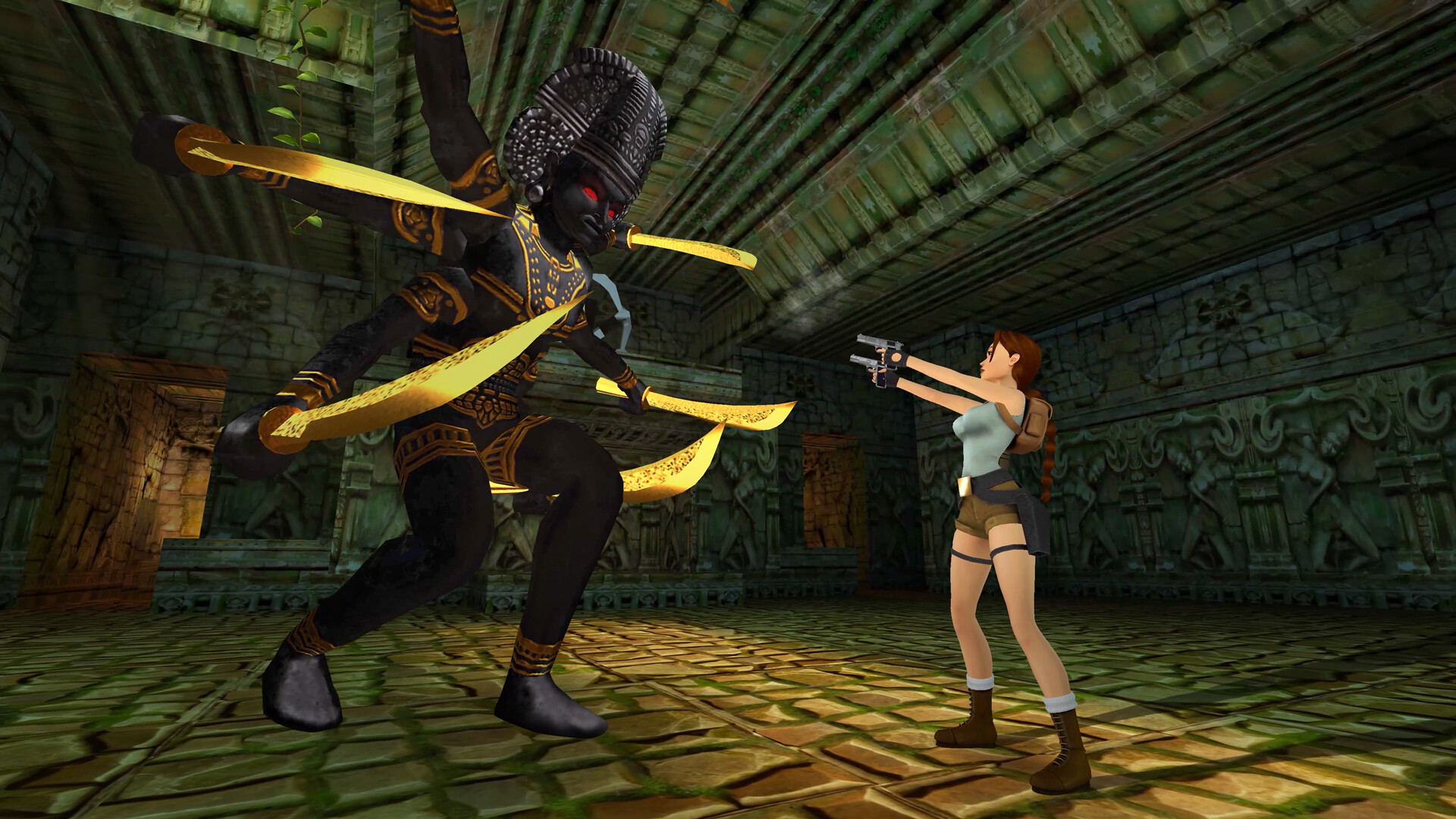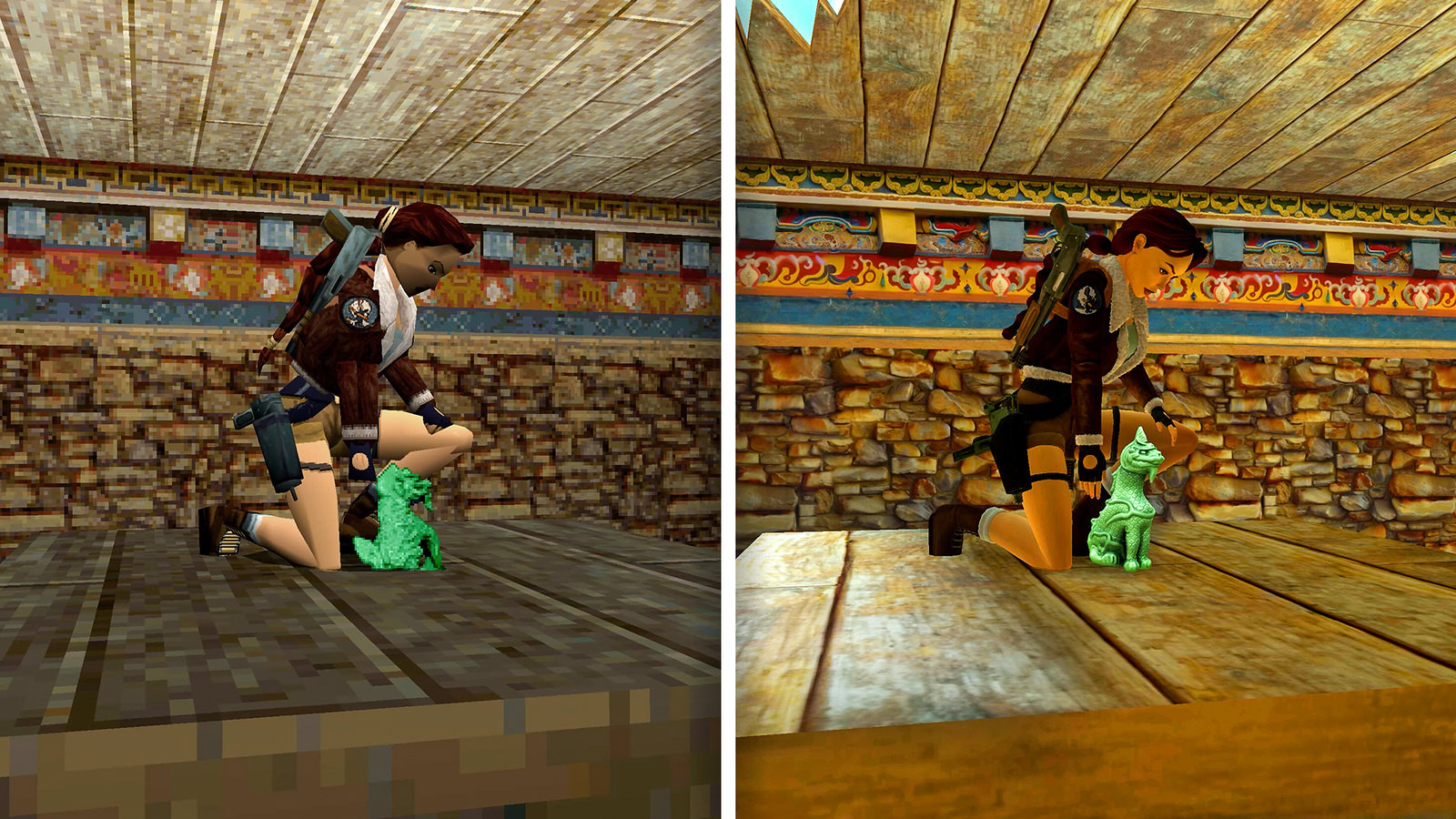Still waiting to discover the next new adventure of our reckless explorer, it is a big leap back which allows us to find Lara Croft, through a compilation bringing together the first three episodes of the franchise imagined by the British studio Core Design. Enough to revive painful memories for those who broke their teeth trying to tear down ancient artifacts, navigating temples full of traps and praying to succeed in a millimeter jump. Nearly 30 years after the release of the first episode, it's time to find out if the developers at Aspyr Media have allowed Lara to stand the test of time.
The trend of ports, remasters and other remakes continues, and it is now the cult franchise Tomb Raider which is making a comeback intended primarily for players who experienced the beginnings of Lara Croft. As its name suggests, Tomb Raider I-II-III Remastered brings together the first three episodes of the franchise, released one year apart between 1996 and 1998, on the first PlayStation console in particular. Being part of the first 3D games, these three titles logically feature very typical graphics of the time with sharply cut 3D models and particularly pixelated textures. It therefore seemed absolutely necessary to offer a more comfortable gaming experience by reworking these two points, while making a major revision regarding handling, already considered quite difficult to master at the time. We appreciate in passing the presence of bonus content from the period, which allows the already generous lifespan to be further increased from the whole.
Advertisement
The first point that jumps out at you with these new versions is that the graphics are quite correct without being particularly breathtaking, and allow you to get closer to the Legends, Anniversary and Underworld episodes released on Xbox 360, while benefiting from better resolution, in 4K on Xbox Series X, and flawless fluidity which contrasts quite significantly with the original versions. With a simple press of the menu button, you can switch from this remastered version to the original one, both to allow for comparisons, but also to facilitate exploration. It is indeed not uncommon to look for a while for mechanisms to activate, which have the unfortunate tendency to blend in a little too well with the decor. A quick switch to the original version then allows you to see things much more clearly.
Same complaint with the lighting effects, much more realistic now, but which tend to plunge certain corridors into complete darkness. The developers of Aspyr then had the idea of including additional points of light, even if their number is not enough to compensate for the lack of brightness in certain places. Same thing with the addition of vegetation, a good intention which sometimes obstructs the general readability, and again forces us to switch to the original version while we see more clearly. In the same way, the addition of a photo mode is a blessing when it comes to exploring a location in detail to analyze the route to take without risking a fatal fall.

For those who experienced the beginnings of the saga, the big question lies above all in terms of gameplay and the ability of the developers to have simplified the lives of players. Known for adopting “tank” gameplay (literally translated as “chariot controls” in this French version) to accommodate the D-pad of the first PlayStation controller, all three games are now playable with modern handling, with classic stick movements. And here again, there was talk of switching several times between these two proposals, with the obligation to go through the menu to do so while using a button combination would certainly have been a better solution. Because if the modern controls are appreciable in the platform phases, in particular to better understand the jumps to the millimeter, we realize that certain pirouettes are more difficult to pull off. Same thing to perform side jumps in combat, to perform a back jump or reverse while Lara crawls, movements that are simpler to perform with the tank controls, despite their heaviness.
Advertisement
And if you have memories of difficult games, know that this is still the case, despite these few improvements in general playability. The developers of Core Design did not hesitate at the time to hide enemies in the style of Dark Souls, to better surprise you and above all to try to reduce your life bar until death ensues. Likewise, falls from a high platform have the same effect, and the slightest misstep can be fatal. Uncommon, even at the time, you then have to use a button to “walk” to position yourself at the edge of a precipice before continuing with a jump forward or in height, and then use another button to jump. grab if necessary. It's archaic, but we eventually get used to it. What has aged particularly well, however, are Lara's animations. Each movement is very detailed and fluid, which makes the platforming phases a little more enjoyable. We still regret some inaccuracies, often linked to terrible camera problems which spoil the experience of an exotic exploration of temples and places with often linear architecture, sometimes built in mini-open areas with the necessity to find keys to progress.

And if you are wondering why we have not detailed each of the three episodes present in this compilation, it is for the simple reason that these follow one another and come together almost line for line. By releasing one episode per year, we imagine that the Core Design teams were particularly attached to develop the bestiary and level design, rather than delving deeper into the gameplay. As proof, this desire to plunge us directly into the difficulty with episodes 2 and 3, while the first Tomb Raider left us two small levels to get us up and running before moving on to moments of great suffering. Apart from this detail, we still find some little new features from one episode to another with the appearance of vehicles and the need to pick up items from corpses from Tomb Raider 2, and the ability to crawl and even choose the order of certain levels in Tomb Raider 3.
Each episode is in any case an opportunity to see the country, with levels that take us to Peru, Venice, Antarctica, the Nevada desert and even London, not very far from the Croft mansion. Lara's home is also the place where it is possible to get used to the handling of the game, with here also the need to move from one type of control to another to avoid tearing up on the training courses. Important precision, the backup system allows you to keep your progress at any time, without any limit of use. Enough to limit frustration, while avoiding having to start the same complicated passages many times (and there are many of them).
We end with the technical aspect of the game, totally in its original version, with its huge pixels (even more obvious during the cutscenes) and its framerate which must run at 20 frames per second. Everything is still displayed in 16:9, apart from the menus which have retained their 4:3 format. The staging and sound design have aged particularly poorly, and would undoubtedly have deserved a little revision for the new version. Concerning the latter, we welcome the work carried out on the water, compared to absolutely abominable effects on the original version, and a much more pleasant rendering after the passage of Aspyr. On this new version, Lara's design is the same from one episode to another, which is a relative shame in the sense that the English explorer had different hairstyles depending on the games present in the trilogy. Without fault however concerning the fluidity of the whole, which once again highlights the quality of the animations.

Without having to offer us completely revisited games as the Crystal Dynamics developers did with the Anniversary episode, we would still have liked Aspyr Media to commit a little more resources to erase as many of the defects present in these three as possible. first Tomb Raider. Considered totally archaic today, both for their ultra-heavy handling and their wickedly pixelated graphics, Tomb Raider I-II-III still offers a little essential makeover which should convince players who wish to (re) discover Lara's beginnings in video games, while being well aware that they are still capable of generating good large doses of general frustration.
+
- Three cult games, and their bonus levels
- Two types of handling, modern and tank
- Animations that have aged very well
- Ability to save anytime
- Lifting that does not distort the work
- Original graphics included
–
- Gameplay still difficult to learn
- Catastrophic staging and dubbing
- Cutscenes that deserve to be reworked
- Camera straight out of Hell
- Not great sound design
